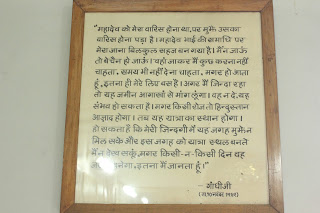सारस बाग़, पुणे
सरस बाग पुणे में एक प्रसिद्ध पर्यटन स्थल है। इस बाग का निर्माण नाना साहेब पेशवा द्वारा करवाया गया था। यह सुंदर बाग पार्वती हिल्स के पास स्थित है। इस पार्क में गणपति का मंदिर भी है।
जो लगभग 220 साल पुराना है।
In the 18th century soon after completion of Shree Devdeveshwar Temple on the crest of Parvati hill, Shrimant Nanasaheb Peshwa turned his attention towards the development and beautification of environs of Parvati hills.
He constructed a lake along the Ambil odhha(stream) near Parvati foot hill. This lake was to be used for boating and creating gardens in the area. The excavation of the lake started around 1750, after completion of Parvati Temple and was still going on in 1753. One day, on his way to Parvati Temple, Shrimant Nanasaheb Peshwa noticed the slow progress of this work. Annoyed Shrimant got down from his elephant and himself started picking up boulders for erection of the dam wall. The shirking labourers were ashamed by Nanasaheb Peshwa's act and the citizens also felt equally embarassed. Following this, It is said that the work got better momentum and was completed soon.
This lake at the Parvati foot hills had an area of about 25 acres(2000 Sq.mts.). An island of about 25000 Sq.ft. area was retained in the middle of this lake. Later on, a beautiful garden was created on this island. Shrimant Nanasaheb Peshwa gave it a rather poetic name, “Sarasbaug”
In 1784, Shrimant Sawai Madhavrao Peshwa built a small temple in Sarasbaug and installed the idol of Shree Siddhivinayak Gajanan, the God he worshipped. Naturally Parvati, Sarasbaug and the lake became places of worship and leisurely walks for the people of Pune.
Folklore says that Shrimant Nanasaheb Peshwa and his astute consultants, conducted secret meetings and discussions while on the boat ride in this lake. The persons who rowed the boat at such times were either Habshis (Negros), who didn’t understand a single word of Marathi or Hindi, or were stone deaf and dumb. The purpose was to prevent any leaking of the secret discussions. Even if this is just a myth, it is believed that it has mentions in historical chronicles. Historical documents mention of many such confidential discussions between Shrimant Peshwa, Mahadaji Shinde and Nana Phadnis.
Sarasbaug Ganesh temple is built in such a way that the devotees can see the idol of lord Ganesh from the main road. The idol is small but very beautiful and divine. The small museum that was added to the place in the year 1995 displays hundreds of idols of Lord Ganesh. The temple is surrounded by water pond from all sides that has water lotus lots of it. There are some fountains too. You go to the temple by crossing bridge. While the last renovation was taking place a small zoo is added to the Saras Baug and this zoo is named Peshwa Park. Last but not the least the temple has big gardens on all four sides that is a part of Saras Baug. This garden is divided in different sections. Some parts are prohibited to walk on but some are open to use by general public. The gardens are well maintained and tried hard to kept clean but it is India and things can happen here like throwing chips packets in this serene place.

























